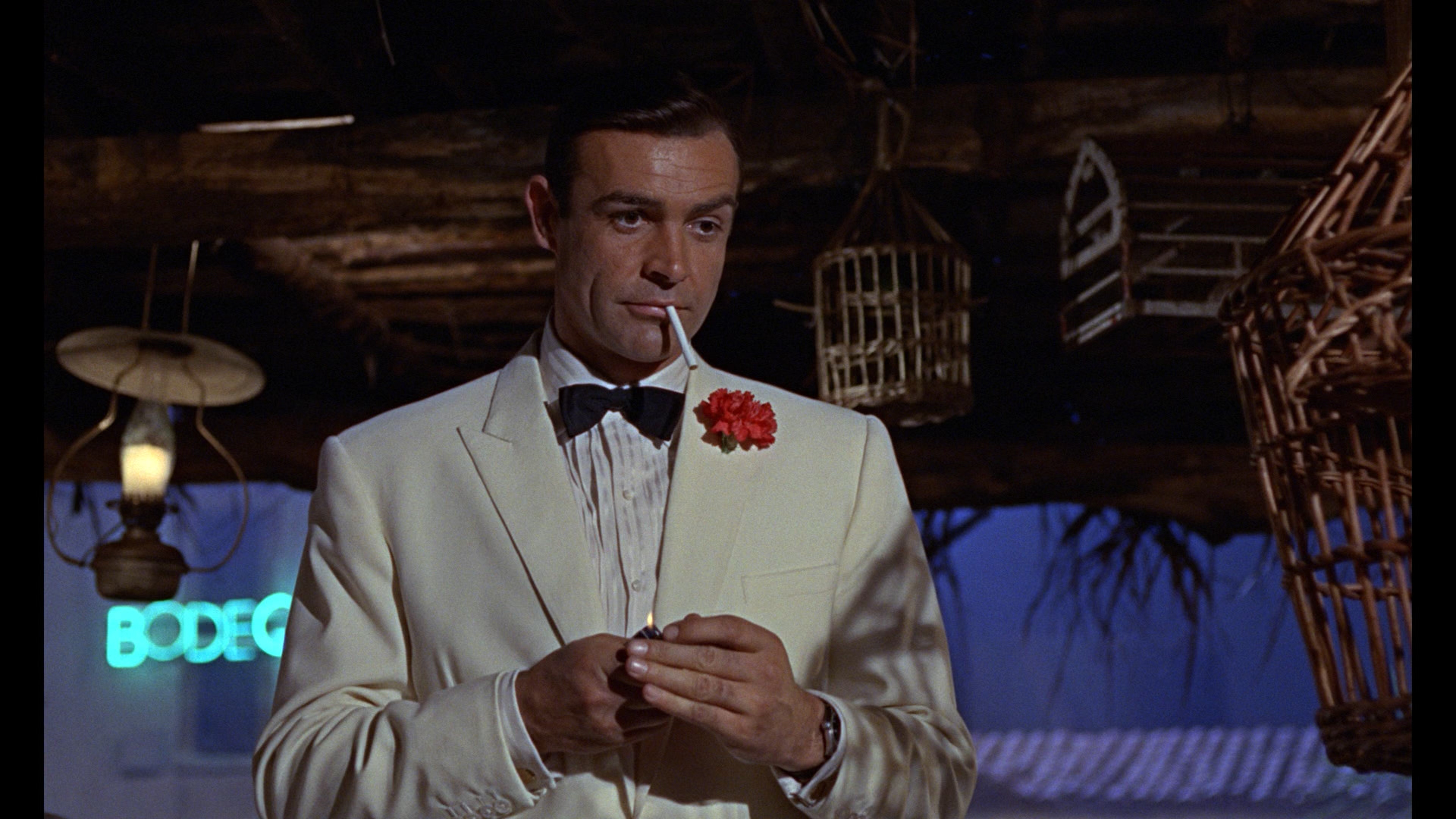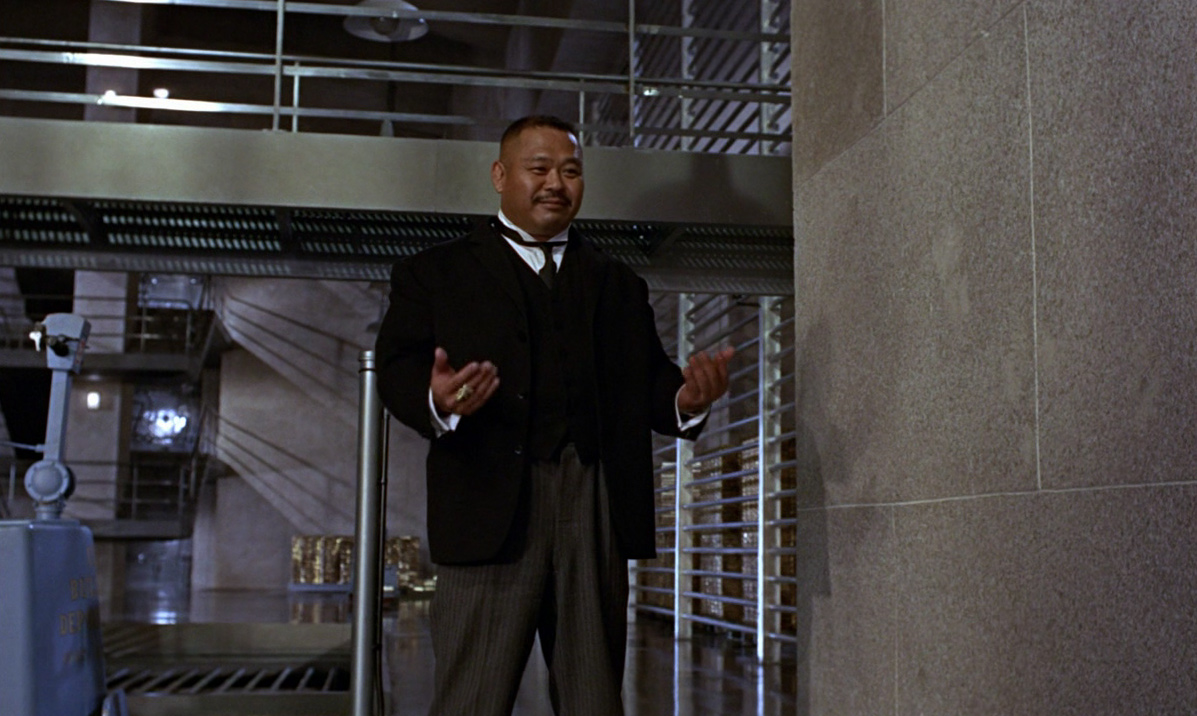Did “Goldfinger” establish the James Bond formula?
Calling any Bond film “the best” is a tough sell. There will always be those that disagree, as “best” is always subjective and never universal. But nearly any Bond fan would agree that Goldfinger (1964) is, at least, one of the best. In nearly any linear ranking of Bond films one can find, if Goldfinger doesn’t take the top spot, it’s at least in the top three—and certainly in the top five. It simply has stood the test of time as one of the crowning achievements of what James Bond is all about, and is revered for its wonderful legacy of pushing the Bond franchise into the ageless, ever-in-demand action franchise it still is today, over 50 years later.
This is because Goldfinger, the third to be produced following Dr. No (1962) and From Russia With Love (1963), is where Bond films fully found their stride. The first two films contained a modesty that Goldfinger shed, yet it still didn’t push into the overblown effects-driven experiences of modern Bond pictures. There is a beautiful balance between both worlds. By the third film, Sean Connery worked out the kinks in the character, fully realizing it here. And at the time of release, setting an English spy film in mostly American locations was a beautiful marketing angle, bridging the pond and ensuring Bond’s ever-important international popularity. Bond may have a license to kill, but Goldfinger gave its producers a license to print money.
Roger Ebert writes, “The Broccoli-Saltzman formula found its lasting form in the making of Goldfinger. The outline was emerging in the first two films, and here it is complete. First, the title sequence, establishing Bond as a sex hound while linking him with a stunt sequence or a spectacular death. Then the summons by M, head of British Secret Service, and the briefing on a villain obsessed by global domination. The flirtation with Moneypenny. The demonstration by Q of new gimmicks invented especially for his next case. Then the introduction of the villain, his murderous and bizarre sidekick, and his female assistant/accomplice/mistress. Bond’s discovery of the nature of the villain’s evil scheme. Bond’s capture and the certainty of death. Bond’s seduction of the villain’s woman. And so on, leading always to a final scene in which Bond is about to enjoy his victory reward: the sensuous fruits of his latest conquest.”
.jpg)
Goldfinger also features many of Bond’s most recognizable images, which itself is a testament to the significance of the formula. Even those unfamiliar with Bond films recognize the likes of Oddjob (Harold Sakata), know the name Pussy Galore (Honor Blackman), have scene the almost-castrating laser scene, and perhaps most importantly, Goldfinger featured the first instance of Bond ordering his ever-famous drink—vodka martini, shaken, not stirred.
Paul Dehn, Goldfinger’s writer, conceived of opening the film with a dialogue-free action sequence that has nothing to do with the rest of the plot. It would give a window into Bond’s lifestyle without any context—something we can sit back and enjoy without any preconception. Here, Bond emerges from water with a duck strapped to his head, breaks into a facility, plants a bomb, escapes, and reveals a pristine white tuxedo underneath his wetsuit. Moments later, he’s at a party enjoying a drink when the building blows up in the background. He speaks for the first time, ejecting some classic Bond snark. The concept worked, and became part of the formula we’d see repeated in almost every Bond film forward.

Umberto Eco’s 1981 book The Role Of The Reader presented the Bond formula as a nine stage structure that kicked off with Goldfinger. Each step occurs in every film. They aren’t always in this exact order, but each is a guaranteed component of a post-Goldfinger Bond film:
1- M gives a task to Bond
2- The villain appears to Bond
3- Bond gives the first check to the villain or vice versa
4- ‘The girl’ shows herself to Bond
5- Bond possesses the girl or begins her seduction
6- Villain captures Bond then the girl or at the same time
7- The villain tortures Bond and sometimes the girl
8- Bond beats the villain, killing him or his representatives
9- Bond possesses the girl whom he then loses, she either leaves him or she is killed
The formula is a variant of Joseph Campbell’s proven “Hero’s Journey,” and its familiarity is likely a big contributor to Bond’s lasting success. Formulaic storytelling never gets old.

Today, Goldfinger is still an immensely enjoyable Bond film. It hasn’t been outdated by time or technology the way a few Bond films have, its villains still resonate through all of their screwy, oddball Bond eccentricities, and the film is quite humorous, both via Bond’s deadpan wit and the irony of his inefficacy in the story. (Bond truly isn’t that successful in the film. Two women die as a result of their encounters with him, he spends the latter half of the film as a prisoner, and Goldfinger’s (Gert Frobe) evil plan is thwarted by Pussy Galore, not Bond.)
The production design by Ken Adam and art direction of Peter Murton established an aesthetic in Goldfinger that endlessly mirrored the proclivities of its antagonist. That style, along with the cars, gadgets, girls, charismatic villains, and all the other components perfected in Goldfinger contributed to the formula we still treasure today.

